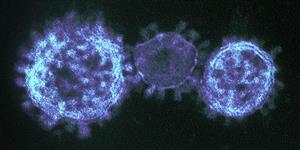|
I share with you some important eyecare-specific information, from the American Academy of Ophthalmology and the Royal Australian and New Zealand College of Ophthalmology, related to the novel coronavirus, referred to as severe acute respiratory syndrome coronavirus 2 (SARS-CoV-2). The highly contagious virus can cause a severe respiratory disease known as Corona Virus Disease - 2019 (COVID-19). (My region-specific advice for South West and Western Victoria are included in red)) Background information on COVID-19: Symptoms can appear as soon as 2 days or as long as 14 days after exposure. The virus is believed to spread primarily via person-to-person through respiratory droplets produced when an infected person coughs or sneezes. It also could be spread if people touch an object or surface with virus present from an infected person, and then touch their mouth, nose or eyes. Viral RNA has also been found in stool samples from infected patients, raising the possibility of transmission through the fecal/oral route. There is a possibility of asymptomatic transmission. A Feb. 21 report in JAMA details a case of an asymptomatic carrier who possibly infected 5 family members despite having normal chest computed tomography (CT) findings. These reports, however, are preliminary. What you need to know
Countries and regions considered to pose a higher risk of COVID- 19 transmission
As the new evidence is emerging, information regarding current countries and particular areas within those countries of concern can be found at: Steps to take: 1. Routinely ask all patients before their appointment and again on arrival at the practice: a. if they have returned from any of the countries, listed above, affected by outbreaks of the coronavirus (COVID-19) in the past two weeksand b. if they have respiratory symptoms (note: symptoms may occur between 2-14 days after infection - this means asymptomatic patients cannot be excluded) 2. Follow all recommended guidelines for protecting yourself and protecting your work environment against infection. Click button below Note: Symptoms can appear 2-14 days after exposure. Ask patients if they have symptoms suggestive of COVID-19 including fever, respiratory symptoms (cough, sputum, shortness of breath), fatigue, myalgia, headache. Most patients presenting with viral conjunctivitis will have adenovirus. However, a study by Guan W et al. indicated conjunctival congestion was present in 0.8% of the Chinese cohort of 1099 patients with laboratory confirmed COVID-19. There is some evidence that the virus can cause conjunctivitis and be spread by aerosol contact with conjunctiva. (AAO, Xia et al.). a. Non-urgent eye problemPatients with a non-urgent eye problem who have travelled in a higher or moderate risk COVID-19 country within the last 14 days OR Patients who have been in close contact with a confirmed case of COVID-19 in the last 14 days OR Patients with symptoms suggestive of COVID-19 Should have their eye appointment postponed for 14 days until COVID-19 has been excluded. The patient should be referred to an appropriate clinical centre for testing (South West Health Care Warrnambool, Colac Area Health or Western District Health Service Hamilton). The current interim advice from the Australian Government Department of Health (click link below) suggests:
b. Urgent eye problemOphthalmologists/ optometrists seeing a patient with an urgent eye problem who is at risk or has symptoms suggestive of COVID-19 will need to use their discretion to triage the relative urgency of each condition. i) If the eye condition can wait, the patient should be referred to an appropriate clinical centre for testing (South West Health Care Warrnambool, Colac Area Health or Western District Health Service Hamilton). See above link for guidelines on referral ii) If the eye condition cannot wait (*see note below), the current interim advice from the Australian Government Department of Health should be followed including:
iii) Any patient with severe symptoms suggestive of pneumonia should be transferred to and managed in hospital. Call 000 and advise the operator that the patient is in self- quarantine because of COVID-19 risk. *NOTE: I expect that most, if not all, Optometry (and Ophthalmology) practices will be unable to implement the above procedures and as such, my advice is to refer all suspected patients (ie those at risk or who have symptoms suggestive of COVID-19) to an appropriate clinical centre for testing (South West Health Care Warrnambool, Colac Area Health or Western District Health Service Hamilton). The eye problem can then be assessed and treated at a facility where all the appropriate resources are available. References
1 Comment
Your comment will be posted after it is approved.
Leave a Reply. |
AuthorDr Vincent Lee, Archives
April 2020
Categories
All
|
Proudly powered by Weebly



 RSS Feed
RSS Feed